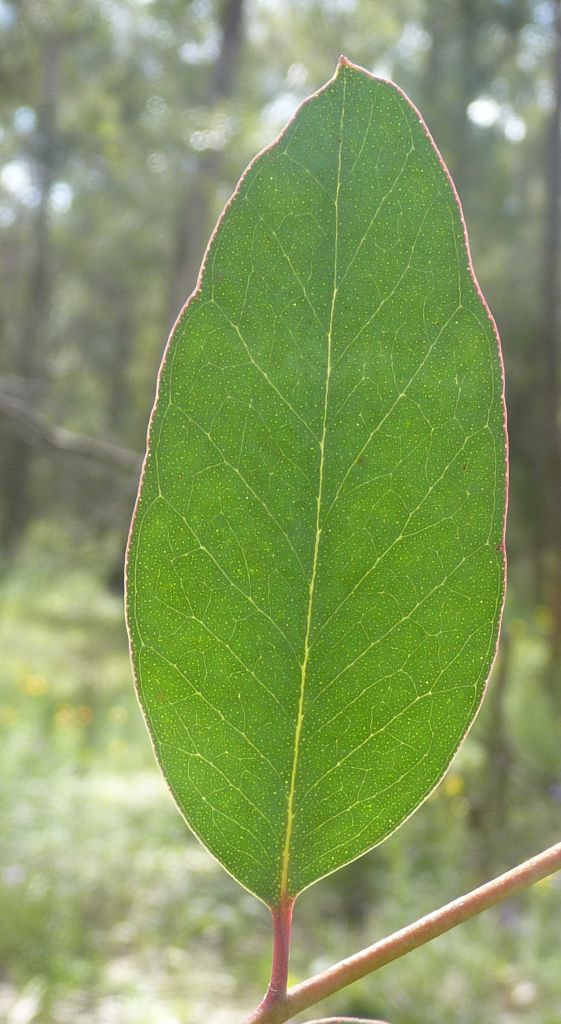Fruits/Seeds
Round or oval, 3 - 7 mm long and 3 – 5 mm wide, coupled on a small stalk and brown in colour.
Field Guide
Improve your identification skills. Download your Grey Box field guide here!
Medium-sized tree with long ascending branches forming a fairly large crown, grey fibrous bark on the lower branches and trunk. The upper branches have a smooth grey coloured bark. Commonly grows to 10 - 25 m tall.
Juvenile leaves petiolate (a stalk that joins a leaf to a stem), are dull green, oval, usually 15 cm long and 5 cm wide. Adult leaves are narrow oval shape tapering to a point at each end, usually 8 – 15 cm long and 1 – 2 cm wide, clustered and dull green.
The flower buds have cone-like caps. Flowers are cream to white which appear in late summer to winter (February to June).
Round or oval, 3 - 7 mm long and 3 – 5 mm wide, coupled on a small stalk and brown in colour.
Improve your identification skills. Download your Grey Box field guide here!

First fully open single flower
Full flowering (record all days)
End of flowering (when 95% of the flowers have faded)
No flowering


Narrow-leaved Grey Box (E. pilligaensis) has narrower juvenile and adult leaves.
White Box (E. albens) adult leaves are petiolate, 10 – 16 cm long and 1.7 – 3 cm wide, dull blue-grey. Flowers August to February, white flowers.
Can be confused with Yellow Box (E. mellidora) which has a scruffy, yellowish to dark brown fibrous bark, dull, green and grey leaves with distinct intramarginal veins and fruit with enclosed valves.